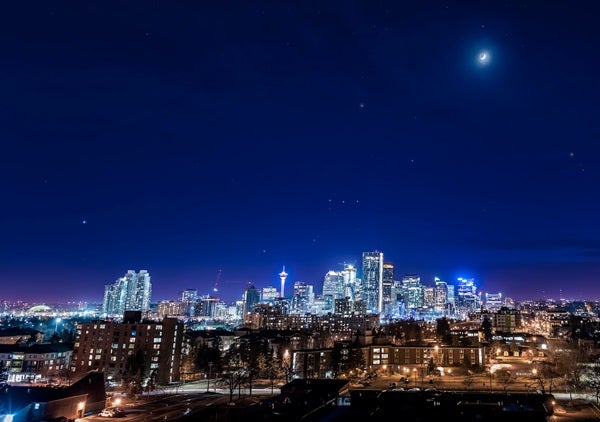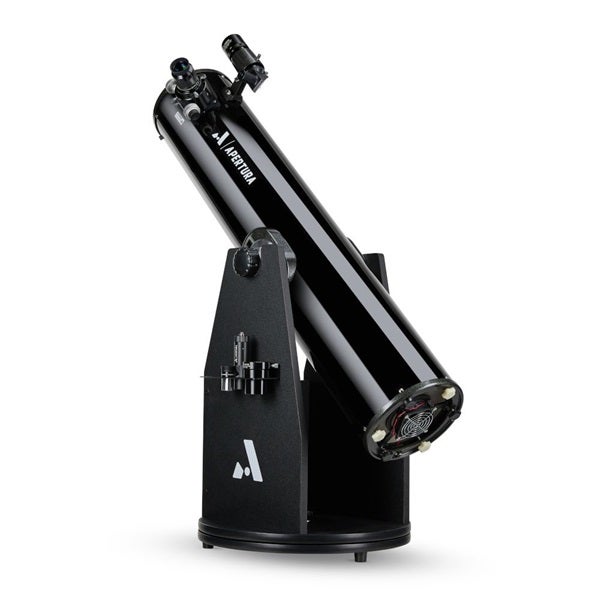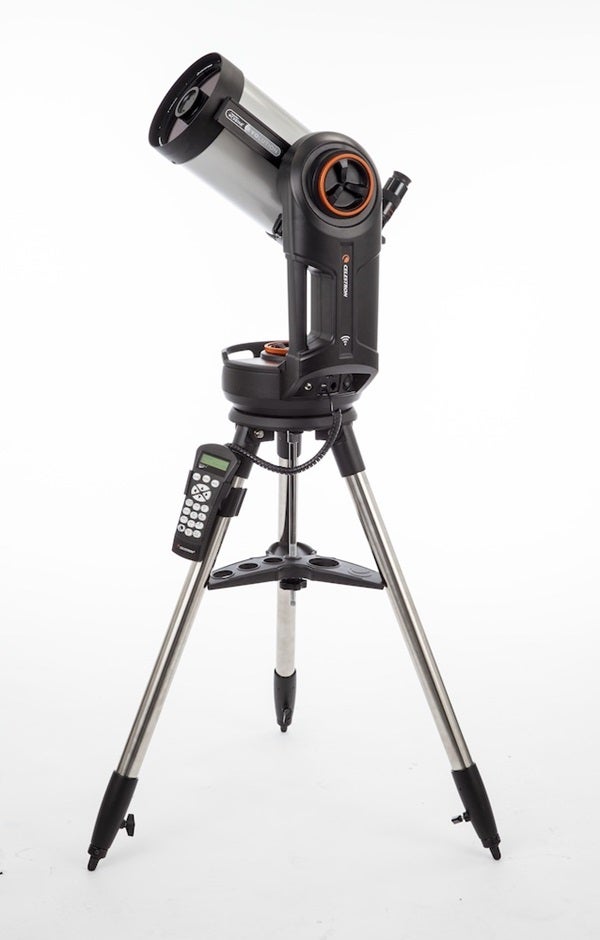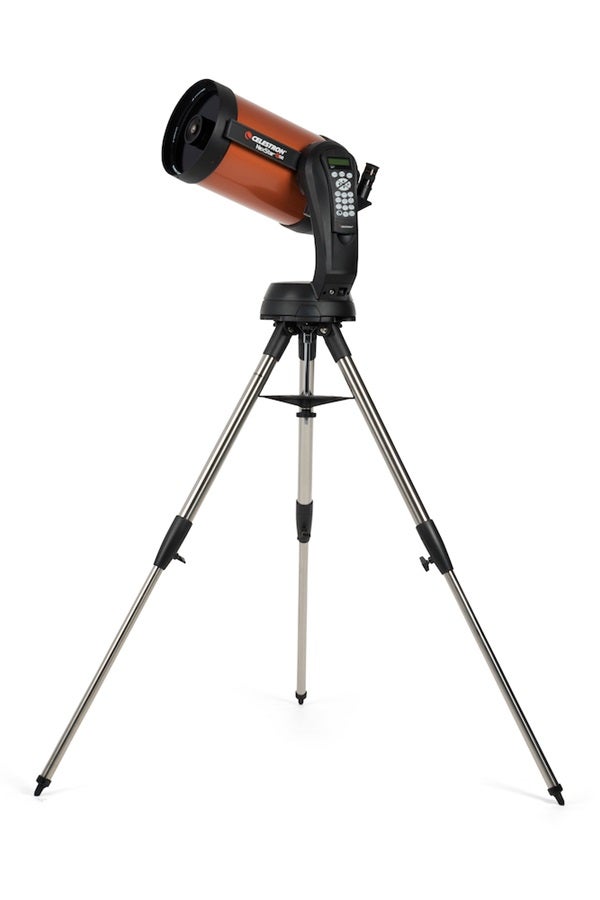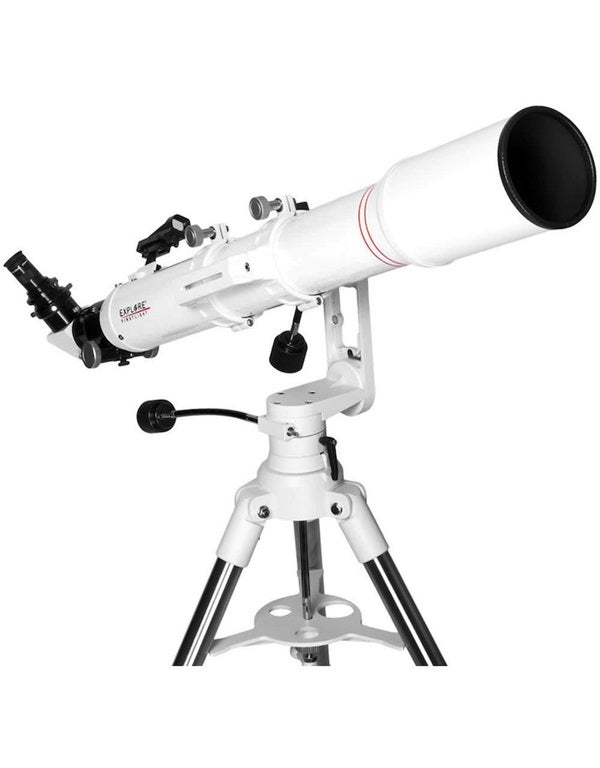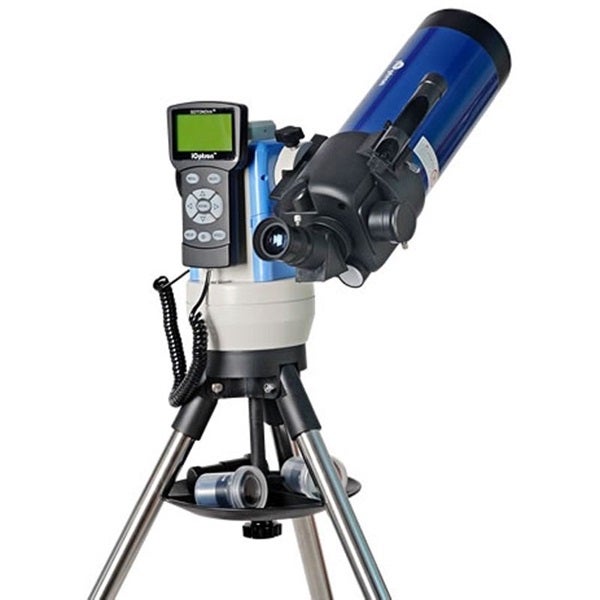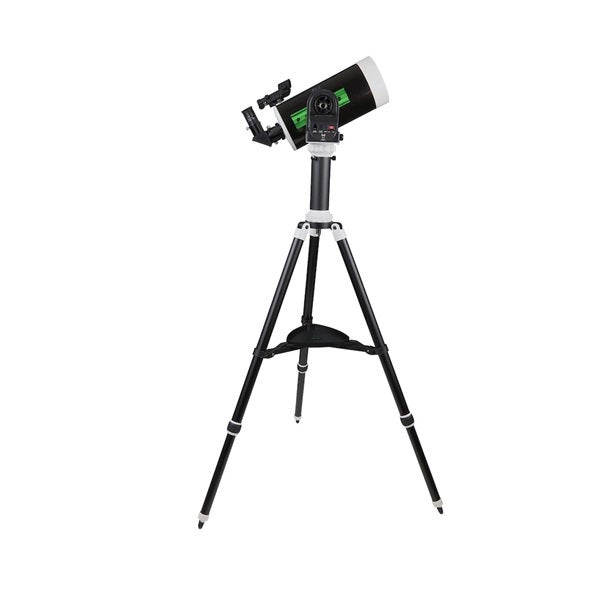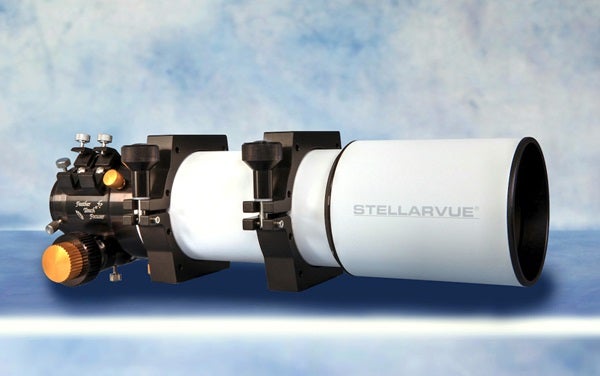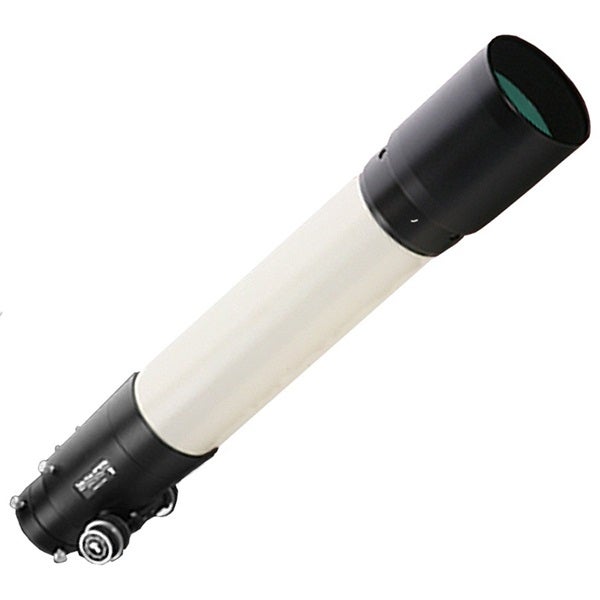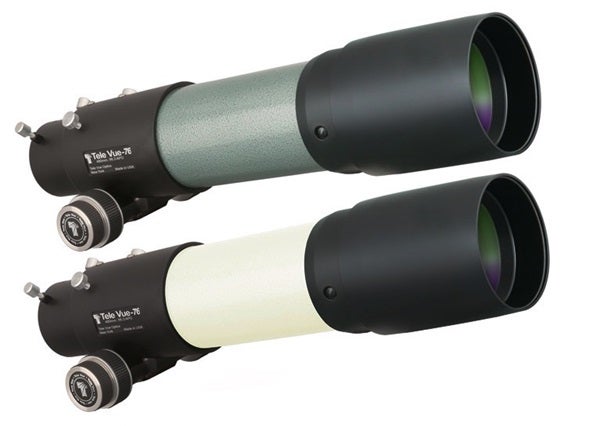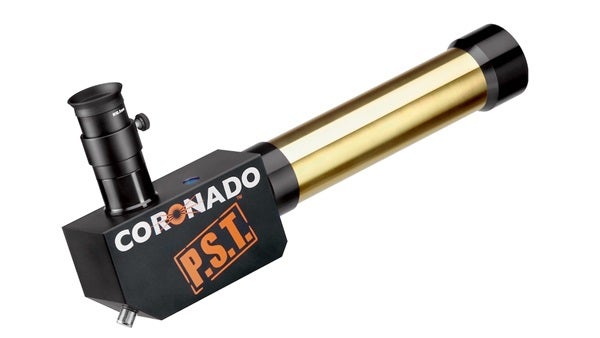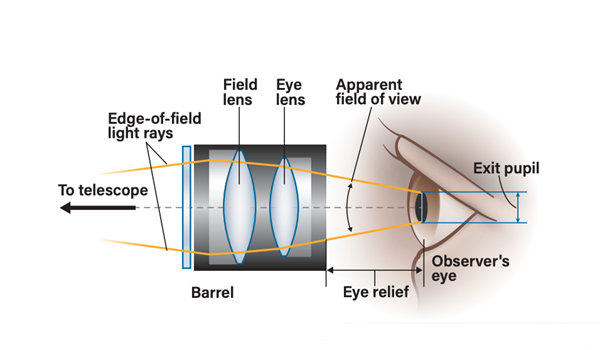Note: This post contains affiliate links. When you buy a product through the links on this page, we may earn a commission.
Many astronomy enthusiasts live under the veil of light pollution, either from local sources like poorly aimed lights on neighboring houses or the enormous light domes enveloping large cities. It can be quite discouraging at first. But it doesn’t mean you can’t be an active observer. Anyone can enjoy wonderful views every clear evening without venturing far from home. You just need to know what telescope is best for you and your location.
When it comes to buying a telescope, most people immediately consider their budget. No one wants to spend beyond their means. But for those who live in a city, there are a few other matters to ponder, as well. The most important considerations are ease of use and storage. Unless a telescope is convenient to use, it will quickly become consigned to the closet. Many a stargazer’s enthusiasm has turned to apathy upon the harsh realization that hauling out and setting up a telescope can be a daunting task.
So, where will you keep your telescope when it is not in use? If you must lug the equipment up and down stairs every night, you’ll want to be able to carry it all in one trip. The same applies if you need to walk or take public transport to a nearby park or other open area. If, however, you have first-floor access and a yard of your own with a clear view, then taking couple of trips is less burdensome.
Also remember that you won’t just be transporting the telescope, but its mount as well. If you must haul the setup a significant distance, avoid heavier designs like German equatorial mounts. Fortunately, nowadays there are many small mounts that are light enough to easily carry, yet sturdy enough to support a portable telescope. The lightest, most compact mounts are altitude-azimuth designs. With these, the telescope moves up and down in altitude and left to right in azimuth, which might be more intuitive for novice observers.
Many setups also feature computerized go-to mounts, which automatically aim the telescope toward a preselected object. That’s a big plus if light pollution obliterates everything fainter than the Moon and brighter planets and stars. But be aware that a go-to mount’s “brain” must first know its location, as well as the time and date, before it will work. In some cases, you will need to manually input that information and go through a one- or two-star alignment process using pre-selected bright stars. Other systems automatically complete all that using GPS technology.
For more details on the different types of telescopes, see my article, “First scopes for adults,” in the June 2022 issue. But for now, here are 10 scopes, arranged in alphabetical order, that might serve you well when viewing the sky from an urban environment.
1. Apertura AD8 Dobsonian
This 8-inch Newtonian reflector rides on a simple altitude-azimuth mount made of wood, making it a Dobsonian. Fully assembled, it weighs 52.2 pounds (23.7 kilograms), so it’s an excellent choice for those who don’t have to carry their telescope up and down flights of stairs.
2. Celestron NexStar Evolution 6
This portable 6-inch Schmidt-Cassegrain telescope comes on a one-armed computerized mount with a built-in battery that lasts up to 10 hours on a single charge. The total kit weighs 38 pounds (17.2 kg) and features an integrated handle for easy carrying.
3. Celestron NexStar 8SE
If you have a bigger budget, consider the 8-inch NexStar 8SE Schmidt-Cassegrain. The telescope attaches to its computerized, single-armed altitude-azimuth mount using a dovetail plate for easy setup.
4. Explore Scientific Explore FirstLight 102mm Doublet Refractor
This 102mm refractor has enough aperture to reveal the Moon, brighter planets, binary stars, and bright deep-sky objects, but is still small enough to easily transport.
5. iOptron SmartStar Cube-A-MC90
iOptron’s innovative CubePro mount (not shown) paired with their compact 90mm Maksutov-Cassegrain scope creates an advanced, highly portable system small enough to carry onboard airplanes.
6. Sky-Watcher SkyMax 127 AZ-GTi
This 127mm Maksutov-Cassegrain weighs 9.7 pounds (4.4 kg), and measures 15 inches (38 cm) long, so is easy to carry and store. It sits atop the AZ-GTi altitude-azimuth go-to mount, which adds another 8.6 pounds (3.9 kg) to the package.
7. Stellarvue Triplet Apo SVX080T-25FT
The Stellarvue SVX080T-25FT refractor features a 3.1-inch (80 mm) three-element apochromatic objective lens, which eliminates the chromatic aberration that can plague traditional achromatic refractors. The scope’s image quality is exceptional, but note the mount is sold separately.
8. Tele Vue-NP101is
You can achieve breathtaking views and images with this 101mm NP101is refractor, thanks to its four-element apochromatic objective lens system. The mount is sold separately.
9. Tele Vue-85
The 85mm TV-85 refractor from Tele Vue combines portability, craftsmanship, and excellent optics in a small package. Again, the mount is sold separately.
10. Meade Coronado Personal Solar Telescope
Let’s not forget about solar observing, especially as we rise out of the doldrums of solar minimum. A dedicated Hydrogen-alpha (Hα) solar scope, such as the 40mm Meade Coronado Personal Solar Telescope, will reveal amazing details, including prominences, filaments, and active regions. (Remember: Never observe the Sun without proper equipment!)
Make the most of your observing session
No matter what you choose, to get the best out of your urban scope, you’ll want to optimize it with a few simple tricks. One of the most helpful techniques to enhance the view is to add a short tube extension, called a dew shield, to the front of the telescope. The extension slows dew formation on the lens or corrector plate, as well as blocks stray light from entering from the side. The latter is especially important for Newtonian reflectors because the focuser is so close to the front of the tube. Make a slip-on dew shield that extends at least one telescope-tube diameter in front of the focuser and paint the inside of the tube flat black to dampen reflections.
Additionally, amateurs often overlook the importance of eyepieces. While many purchase eyepieces based on their focal lengths and the resulting magnification for a given telescope, the real key is exit pupil. The exit pupil is the diameter of the cylinder of light exiting the eyepiece and entering your eye. The size of the exit pupil will change as magnification changes.
Depending on which type of target you are interested in observing, using the right eyepiece combination to get the optimal exit pupil will really enhance your view.
To find out how large the exit pupil will be with a specific telescope/eyepiece combination, divide the focal length of the eyepiece in millimeters by the telescope’s focal ratio (its f/ number, which has no units). Let’s say you have a 6-inch f/10 Schmidt-Cassegrain and a 12mm eyepiece. That combination yields an exit pupil of 1.2 mm (12 mm/10).
As you are selecting eyepieces, make sure they include rubber eyecups. Eyecups are designed to block localized light from entering the corner of the observer’s eye, and they can be a game-changer.
Also be sure to use a broadband light pollution reduction (LPR) filter. Many outdoor lights do not shine uniformly across the entire visible spectrum. Instead, they emit light at only a few discrete wavelengths. For instance, high-pressure sodium streetlights principally shine in the yellow wavelengths. LPR filters suppress the broad portion of the visible spectrum that includes those wavelengths, while allowing others to pass through. Unfortunately, they are not as effective against incandescent bulbs and LED lights, since those emit across the entire spectrum. LRP filters may not magically whisk you away to that perfect dark sky, but they will go a long way toward darkening your field of view and improving contrast.
Urban stargazing can be great fun with the right equipment. With a bit of consideration and preparation, you’ll be treated to years of entertainment viewing the sky — without hours of travel.
Editor’s note: This article was first published in 2022 and updated in 2023.

